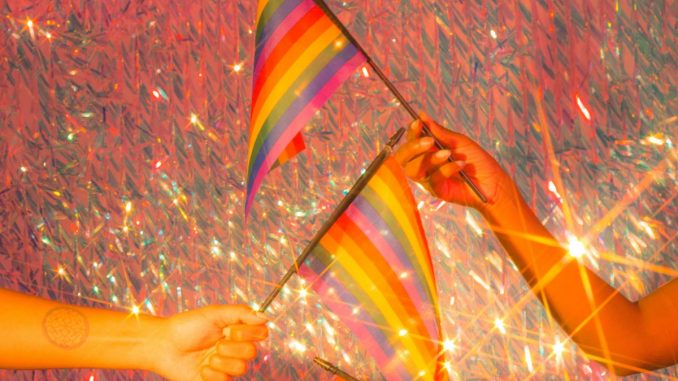

If you’ve ever heard someone describe their sexuality as "2" or a "5," or say that Megan Rapinoe's Sports Illustrated swimsuit photos made them "go up a number," they were probably talking about the Kinsey scale. Developed by sexologist Alfred Kinsey based on interviews with thousands of people and first published in 1948, the Kinsey scale is a seven-point system to describe sexuality. “Exclusively heterosexual” is a 0, “exclusively homosexual” is a 6, and “equally heterosexual and homosexual" is a 3.
In his research, Kinsey found that many people have had sexual experiences with both their own gender and another gender, and that some people find that their sexuality changes over time. The Kinsey scale was also notable because it presented sexuality as a spectrum, rather than an “either/or.” In his book Sexual Behavior in the Human Male, Kinsey wrote, “Males do not represent two discrete populations, heterosexual and homosexual. The world is not to be divided into sheep and goats. Not all things are black nor all things white.”
While the Kinsey scale was groundbreaking at its time, we know a lot more about sexuality and gender in 2019 than we did in 1948. “The Kinsey scale did make significant waves in the way we’ve come to conceptualize sexuality as a spectrum, at least in the sense that one’s sexuality is not finite,” sexuality educator Jamie J. LeClaire tells Refinery29. “However, that spectrum is still just a one-dimensional line. And it’s one that reinforces bi+-negativity, bi-erasure, and really offers no space for the diversity of gender. For many reasons, the concept of attraction having to fall somewhere on the line of strictly heterosexual, and strictly homosexual, is deeply flawed.”
The Kinsey scale has been criticized for how it presents bisexual identities. “Bi+sexual folks [people who are attracted to more than one gender, including bisexual, pansexual, omnisexual, polysexual, and queer individuals] are subject to mistreatment and invalidation of their sexuality, at the hands of the peers and the media all the time,” LeClaire says. “And this scale just perpetuates common stereotypes of bi+ people, such as that they ‘must like one gender more’ or that bisexuality doesn't actually exist.”
They add that the scale presents attraction to the same gender and another gender as being in opposition to each other, rather than as being fully present at the same time. “It treats attraction for the same gender and attraction for the opposite gender as competing identities on this line, so if the attraction for the same gender increases, the attraction for the other must decrease.”
This conception of bi+sexual folks can also “contribute to homophobic narratives for cis men as well,” LeClaire says, “such as the idea that once a cis men become intimate with another man they're ‘fully gay,’ and that bisexuality in cis men ‘doesn't exist,’ a not only limiting, but frankly false, narrative that cis women often perpetuate.”
Additionally, the Kinsey scale is designed to map attraction to two genders, meaning it doesn’t include space for people outside the binary, such as non-binary, genderqueer, and agender folks. “The Kinsey scale is not only invalidating of the holistic bi+sexual experience, but it falsely assumes that gender is a binary,” LeClaire says. “I identify as non-binary, and I’m attracted to all a/genders. Asking me to identify if I'm more attracted to my own gender or the opposite gender simply doesn't work." They ask, "So where do I, and so many other trans and gender-nonconforming folks fit on the Kinsey scale? I’m not sure that we do. I think it's time for a new way to conceptualize gender, and I think it starts by letting people define it for themselves.”
A post shared by Catriona Boffard (@catrionaboffard) on Jun 14, 2019 at 5:32am PDT
The Kinsey Institute for Research in Sex, Gender, and Reproduction itself notes that “The Kinsey scale does not address all possible sexual identities.” In fact, the Kinsey scale is one of over 200 scales that describe sexual orientation. While the Kinsey scale is a significant moment in the history of sexuality research, more than seventy years later, it's no longer the best way to describe sexuality. If the Kinsey scale helps you describe your own sexuality, you may still find it useful. But instead of using numbers to describe someone else's sexuality, ask them what term they prefer.
Click HERE to read more.
You can publish this article on your website as long as you provide a link back to this page.

Be the first to comment